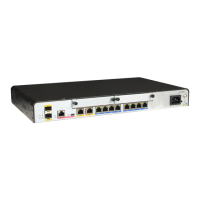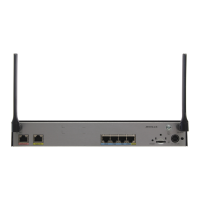Procedure
l Configuring the PE
1. Run:
system-view
The system view is displayed.
2. Run:
bgp as-number
The BGP view is displayed.
3. Run:
peer ipv4-address label-route-capability
The exchange of the labeled IPv4 routes with the ASBR in the same AS is enabled.
l Configuring the ASBR
1. Run:
system-view
The system view is displayed.
2. Run:
interface interface-type interface-number
The view of the interface connected with the peer ASBR is displayed.
3. Run:
ip address ip-address { mask | mask-length }
The interface IP address is configured.
4. Run:
mpls
The MPLS capability is enabled.
5. Run:
quit
Return to the system view.
6. Run:
bgp as-number
The BGP view is displayed.
7. Run:
peer ipv4-address label-route-capability
The exchange of the labeled IPv4 routes with the PE of the same AS is enabled.
In the Option C solution, establish an inter-AS VPN LSP. The related PEs and ASBRs
exchange public network routes with the MPLS labels.
The ASBR establishes a common EBGP peer relationship with the remote ASBR to
switch labeled IPv4 routes.
The public network routes with the MPLS labels are advertised by the MP-BGP. Based
on RFC 3107 (Carrying Label Information in BGP-4), the label mapping information
of a route is carried by advertising BGP updates. This feature is implemented through
BGP extension attributes, which requires BGP peers to process the labeled IPv4 routes.
Huawei AR1200 Series Enterprise Routers
Configuration Guide - VPN 3 BGP MPLS IP VPN Configuration
Issue 01 (2012-04-20) Huawei Proprietary and Confidential
Copyright © Huawei Technologies Co., Ltd.
107

